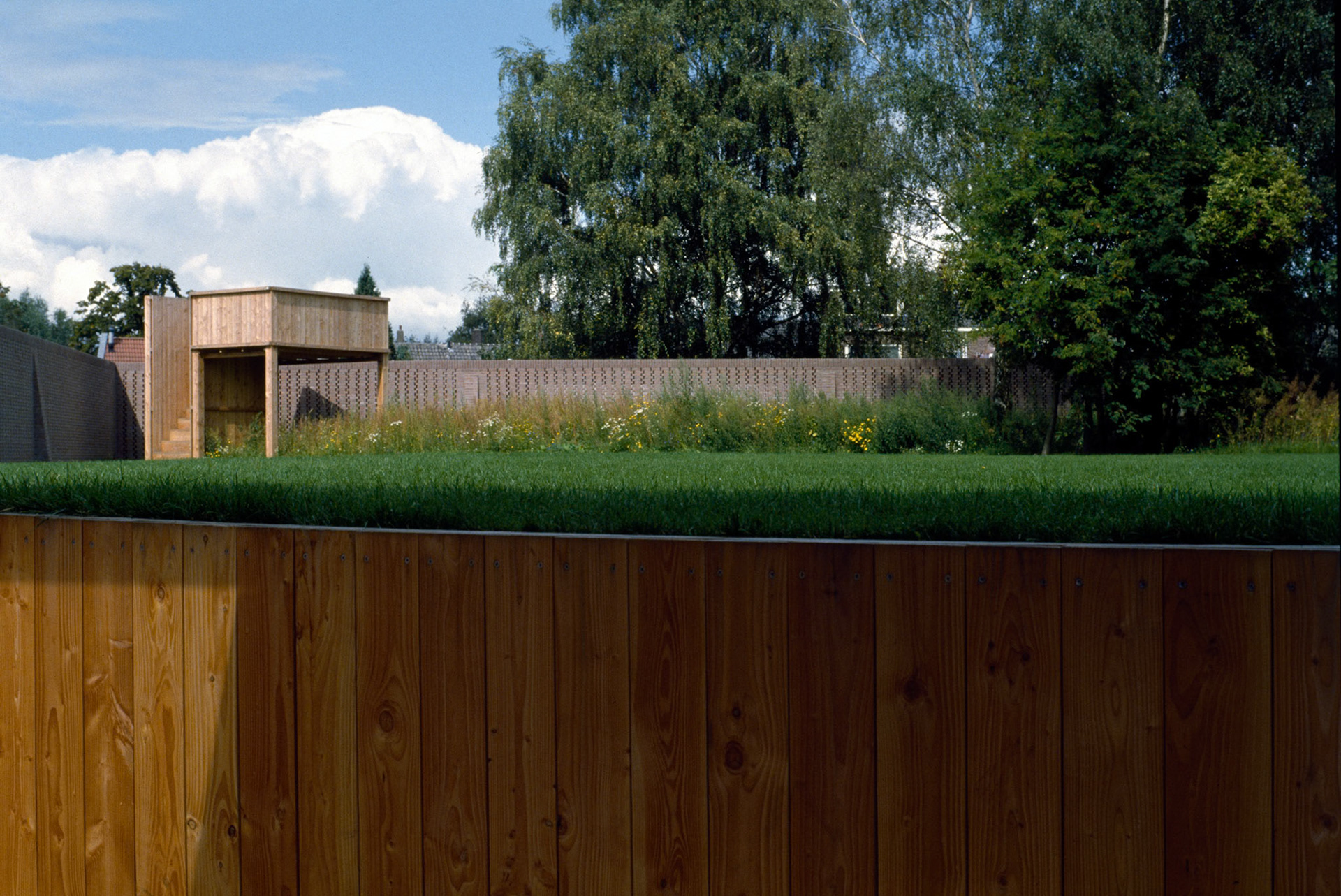


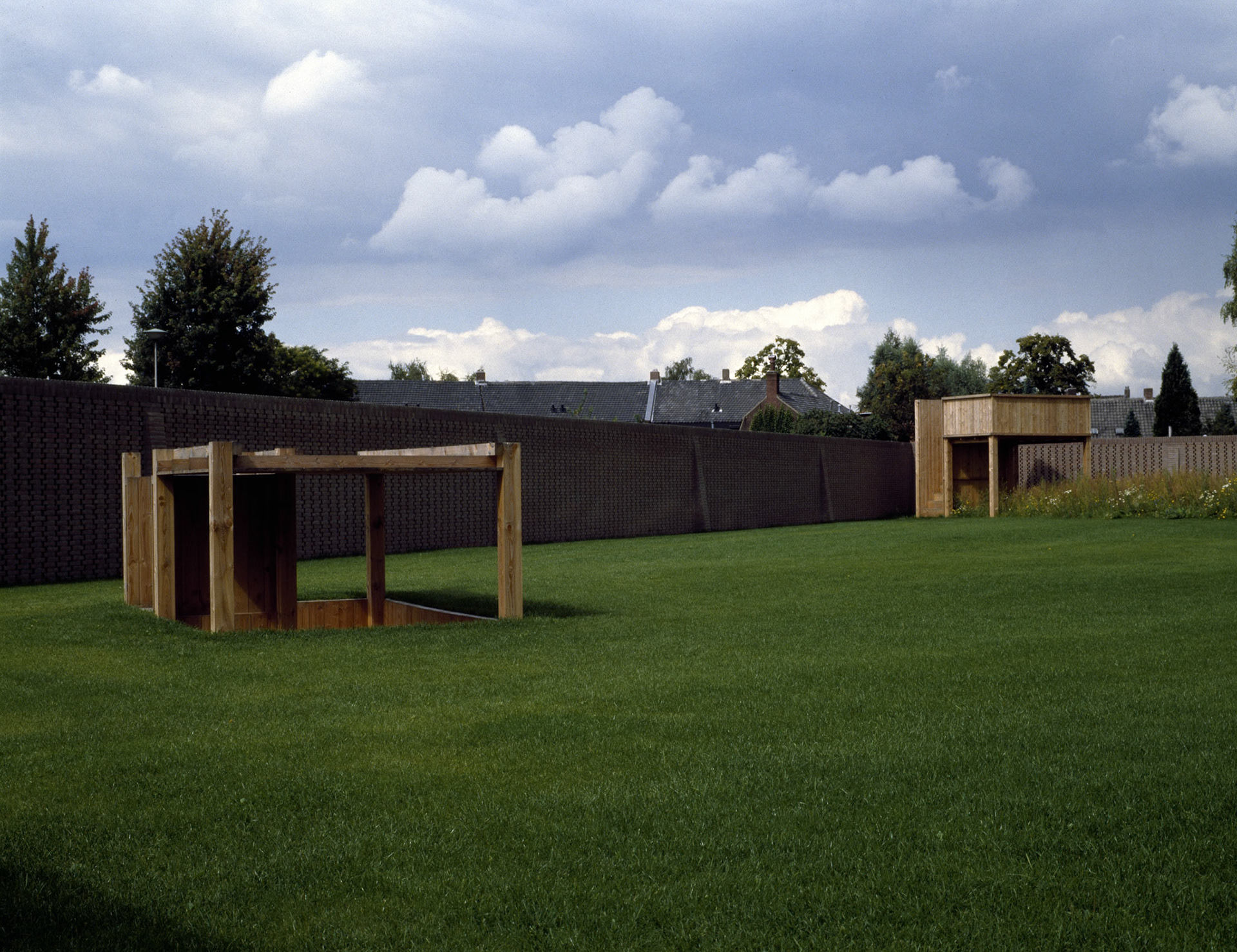
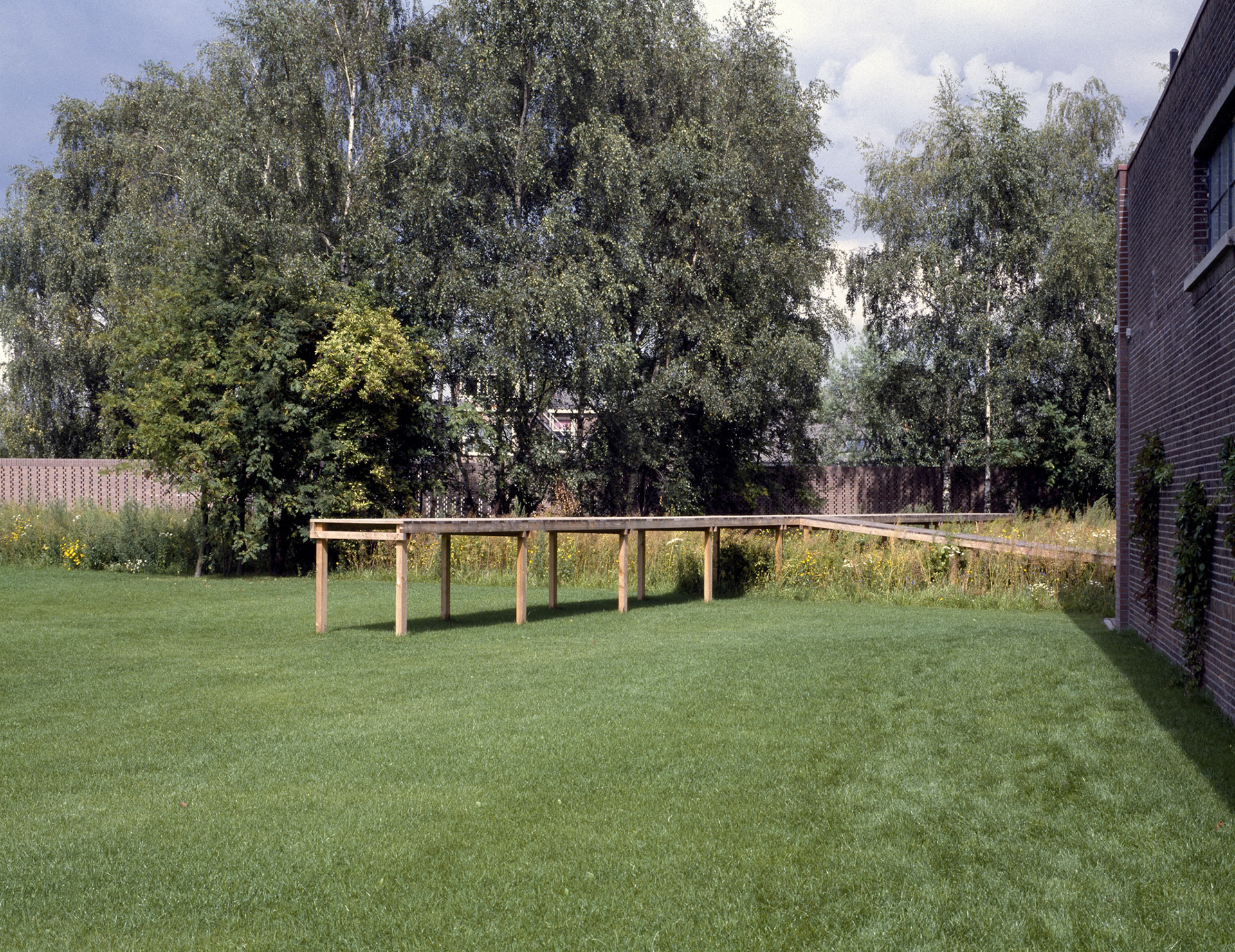
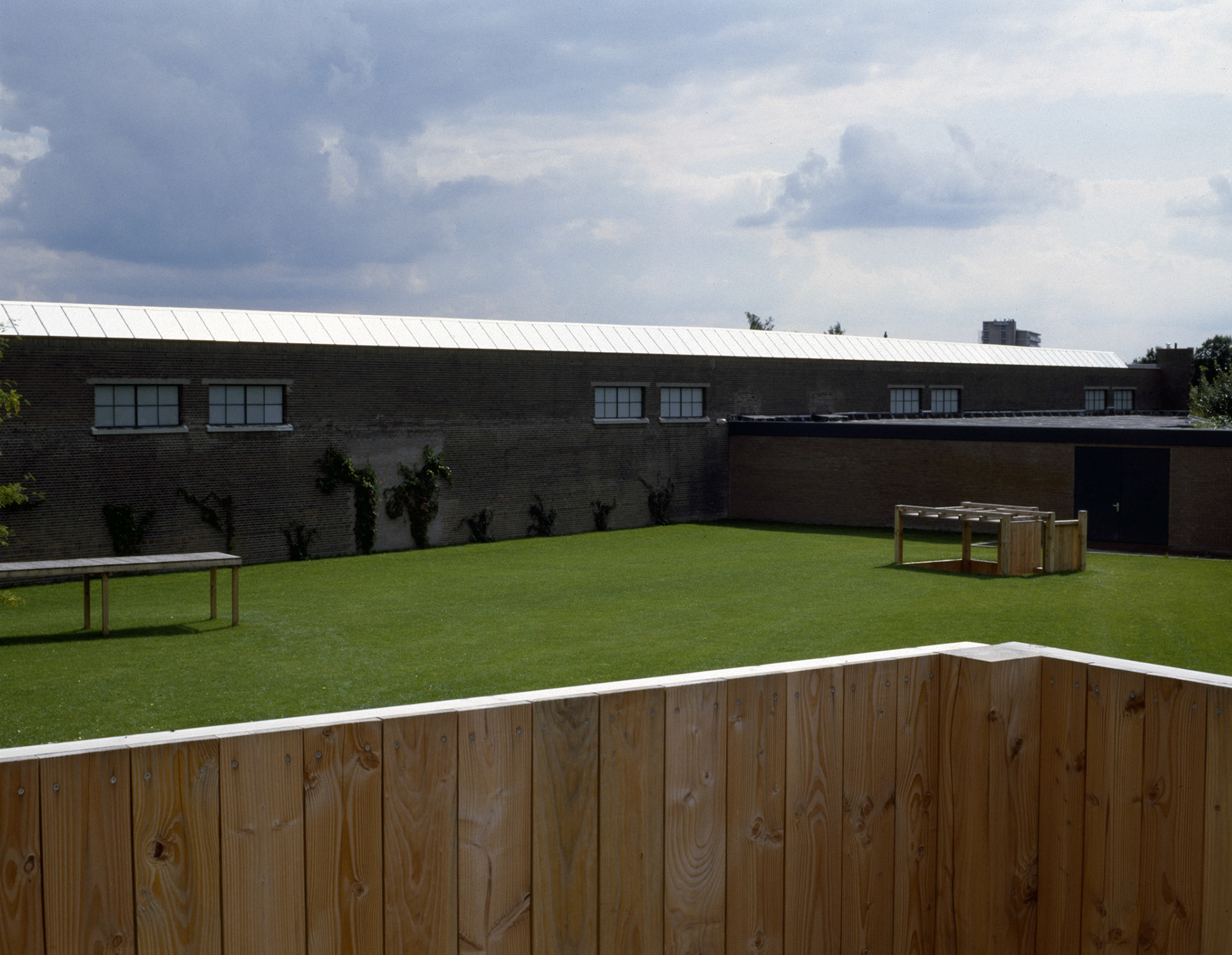
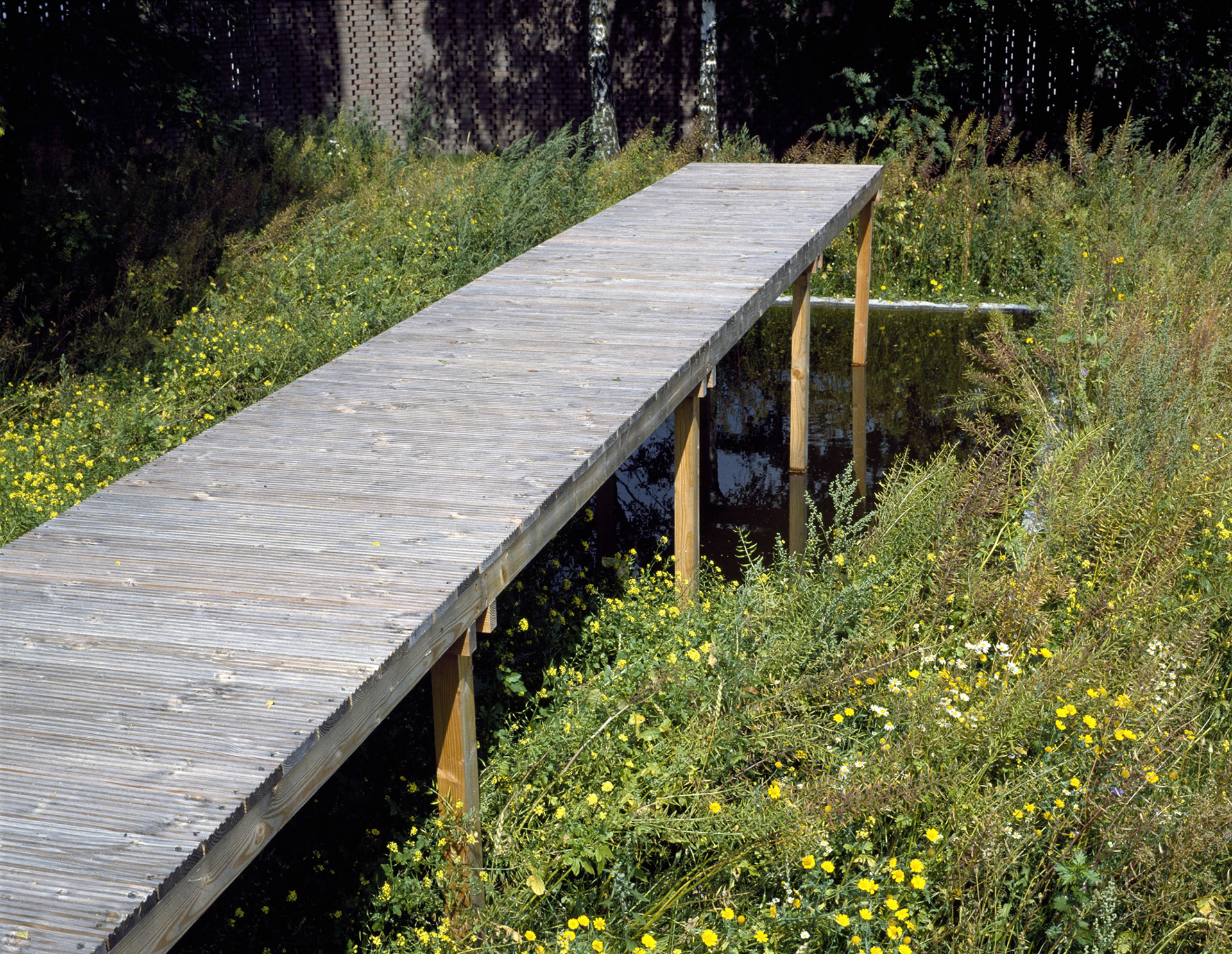
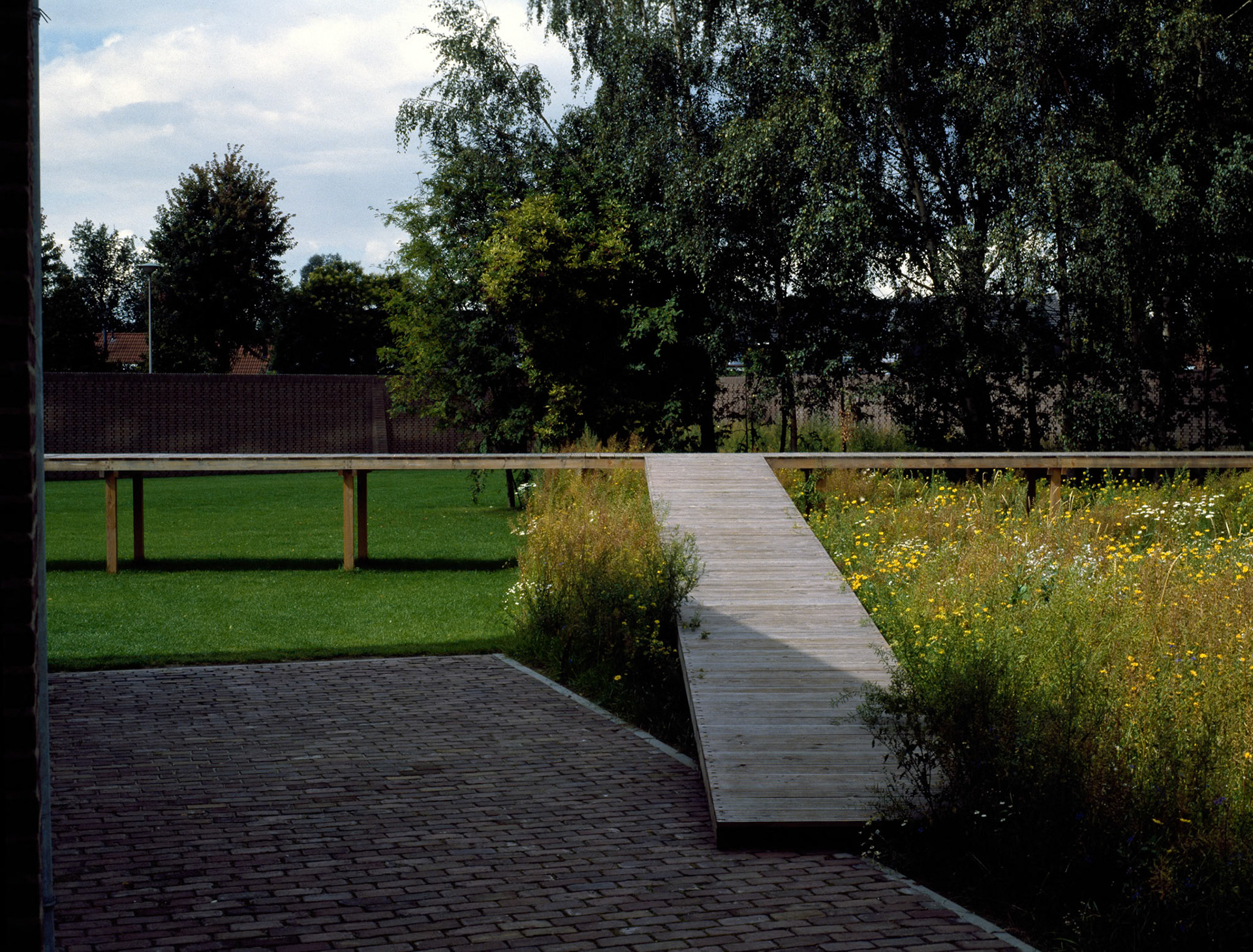
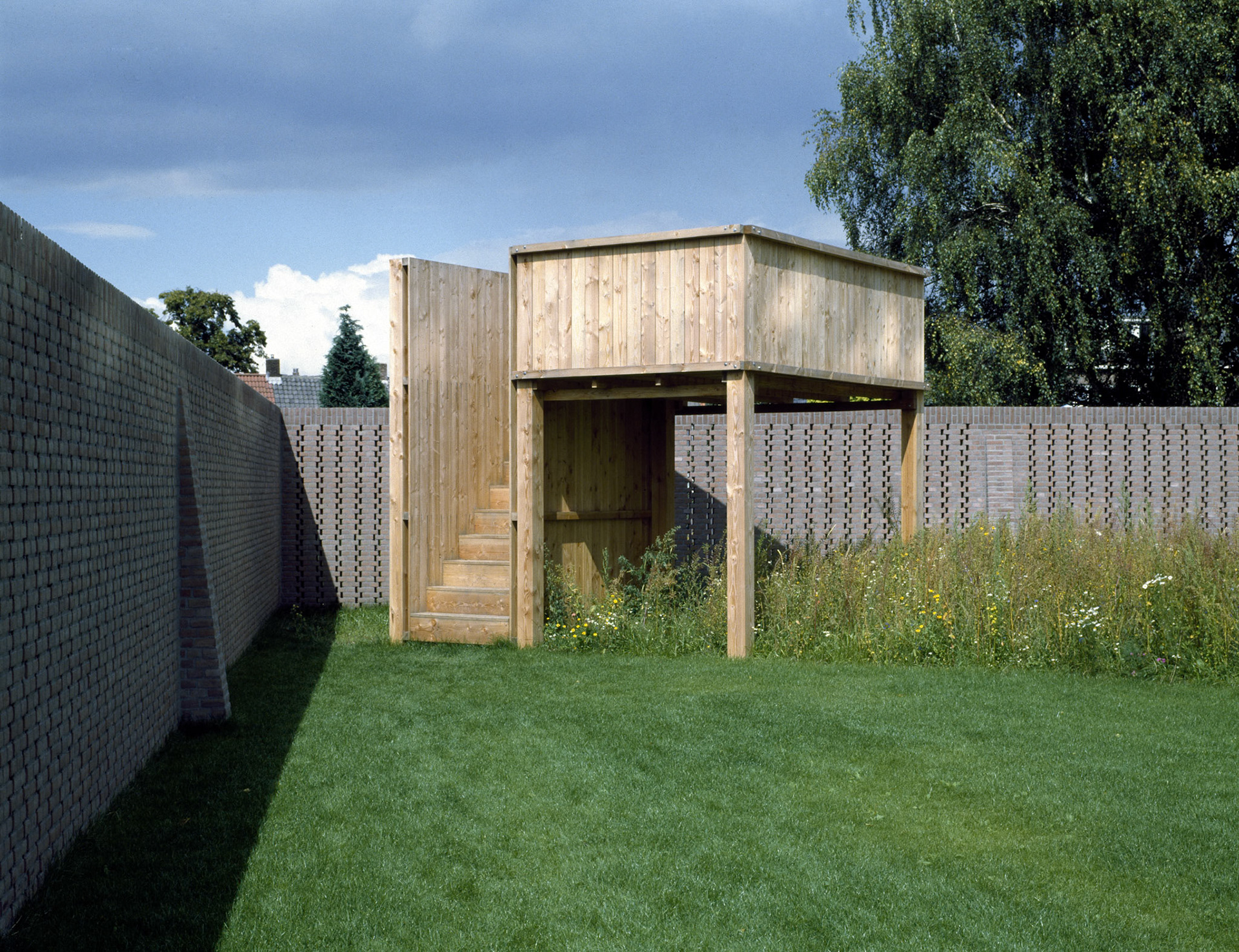
Jeroen Doorenweerd's Garden
The garden at De Pont can be accessed from the restaurant through a small passage between the building and the firewall. The passage first leads to a large patio and then to a large, walled garden, which was not planted until 1992, when the complex was renovated and became a museum. Every year for a couple of years, an artist was invited to redesign the garden at De Pont.
In the summer of 1993, Jeroen Doorenweerd became the first of these invited artists. Despite the austerity of his design, Doorenweerd greatly altered the appearance of the garden. Except for a small stand of trees, there were few places that drew your gaze or tempted you to go for a stroll. The garden was mainly a view from the patio – a buffer against the outside world that is visible over the wall. Doorenweerd rigorously divided the garden in two along a diagonal line that connected the farthest corner of the garden wall with the stone passage. On the left he kept the grass cut short, and on the right he sowed a mixture of tall grass and wildflowers. Parallel to the new axis, a raised walkway accessible by ramp runs from the path by the patio halfway into the garden. It is not only a way into the garden, but also offers the surprise of a short climb. To the right, amid the tall grass, there is a basin. From the ramp leading to the raised walkway, the close-cropped portion of the garden gradually comes into view to the left. At the top of the ramp, the walk-way forks to the left and right. The T shape emphasizes the change in direction that is characteristic of the garden. There too, Doorenweerd’s design draws the gaze to the farthest corners, where there are two observation posts. The taller one makes it possible to look both over the wall and back towards the patio; the other one is at a lower level, sunk into the ground, offering a view from just above ground level that places the raised walkway (and the people on it) within a perspectival frame. Doorenweerd’s intervention trans-formed the garden at De Pont into a space that can be surveyed, all the way to its farthest corners. The actions of the visitors give the paths through the gar-den a reciprocal quality; they lead to places that afford exceptional views, but can also be viewed by others. Doorenweerd’s works do not impose themselves on a space as an ‘artistic feature’, but subtly enhance the perspective on reality that is latent in the surroundings. Yet that reserved presence also constitutes the vulnerability of Doorenweerd’s works as ‘art’. Older artists, in the post-war generation, were able to establish a monumental tradition that brought the experience of space to life in a compelling way in both the metropo-lis and its opposite, the desolate landscape – take the works of Richard Serra, for instance, or a circle of rug-ged stones placed deep in the countryside by Richard Long. But Doorenweerd, no matter how conscious of this tradition he may be, seems to focus his efforts on landscapes that do not offer the same kind of large-scale spectacle. Expertly made of ordinary building materials, his structures generally seem to have an ‘ordinary’ function, which makes them easy to over-look. Doorenweerd has used the word ‘blind’ to de-scribe this quality – the deliberate invisibility of his creations as works of art. And despite what his minimalistic forms might lead you to suspect, Doorenweerd in fact shows the closest affinity with the artists who explore the unreality of the ‘non-landscape’, such as Bustamante, whose photos bring the nameless shrubs between large buildings into sharp focus, or Jeff Wall, who depicts people in peripheral urban zones that have even less character. Although Doorenweerd is less extreme in his choice of locations – perhaps be-cause of his ambition to recapture the physical experience of the surroundings – he also seems conscious of the ‘organized ordinariness’ of the areas surround-ing buildings, such as gardens and the few small, recreational nature areas that remain to us. ‘It is,’ as he himself puts it, ‘in that vacuum that the work is begun.’ (Wilma van Asseldonk)
In the summer of 1993, Jeroen Doorenweerd became the first of these invited artists. Despite the austerity of his design, Doorenweerd greatly altered the appearance of the garden. Except for a small stand of trees, there were few places that drew your gaze or tempted you to go for a stroll. The garden was mainly a view from the patio – a buffer against the outside world that is visible over the wall. Doorenweerd rigorously divided the garden in two along a diagonal line that connected the farthest corner of the garden wall with the stone passage. On the left he kept the grass cut short, and on the right he sowed a mixture of tall grass and wildflowers. Parallel to the new axis, a raised walkway accessible by ramp runs from the path by the patio halfway into the garden. It is not only a way into the garden, but also offers the surprise of a short climb. To the right, amid the tall grass, there is a basin. From the ramp leading to the raised walkway, the close-cropped portion of the garden gradually comes into view to the left. At the top of the ramp, the walk-way forks to the left and right. The T shape emphasizes the change in direction that is characteristic of the garden. There too, Doorenweerd’s design draws the gaze to the farthest corners, where there are two observation posts. The taller one makes it possible to look both over the wall and back towards the patio; the other one is at a lower level, sunk into the ground, offering a view from just above ground level that places the raised walkway (and the people on it) within a perspectival frame. Doorenweerd’s intervention trans-formed the garden at De Pont into a space that can be surveyed, all the way to its farthest corners. The actions of the visitors give the paths through the gar-den a reciprocal quality; they lead to places that afford exceptional views, but can also be viewed by others. Doorenweerd’s works do not impose themselves on a space as an ‘artistic feature’, but subtly enhance the perspective on reality that is latent in the surroundings. Yet that reserved presence also constitutes the vulnerability of Doorenweerd’s works as ‘art’. Older artists, in the post-war generation, were able to establish a monumental tradition that brought the experience of space to life in a compelling way in both the metropo-lis and its opposite, the desolate landscape – take the works of Richard Serra, for instance, or a circle of rug-ged stones placed deep in the countryside by Richard Long. But Doorenweerd, no matter how conscious of this tradition he may be, seems to focus his efforts on landscapes that do not offer the same kind of large-scale spectacle. Expertly made of ordinary building materials, his structures generally seem to have an ‘ordinary’ function, which makes them easy to over-look. Doorenweerd has used the word ‘blind’ to de-scribe this quality – the deliberate invisibility of his creations as works of art. And despite what his minimalistic forms might lead you to suspect, Doorenweerd in fact shows the closest affinity with the artists who explore the unreality of the ‘non-landscape’, such as Bustamante, whose photos bring the nameless shrubs between large buildings into sharp focus, or Jeff Wall, who depicts people in peripheral urban zones that have even less character. Although Doorenweerd is less extreme in his choice of locations – perhaps be-cause of his ambition to recapture the physical experience of the surroundings – he also seems conscious of the ‘organized ordinariness’ of the areas surround-ing buildings, such as gardens and the few small, recreational nature areas that remain to us. ‘It is,’ as he himself puts it, ‘in that vacuum that the work is begun.’ (Wilma van Asseldonk)